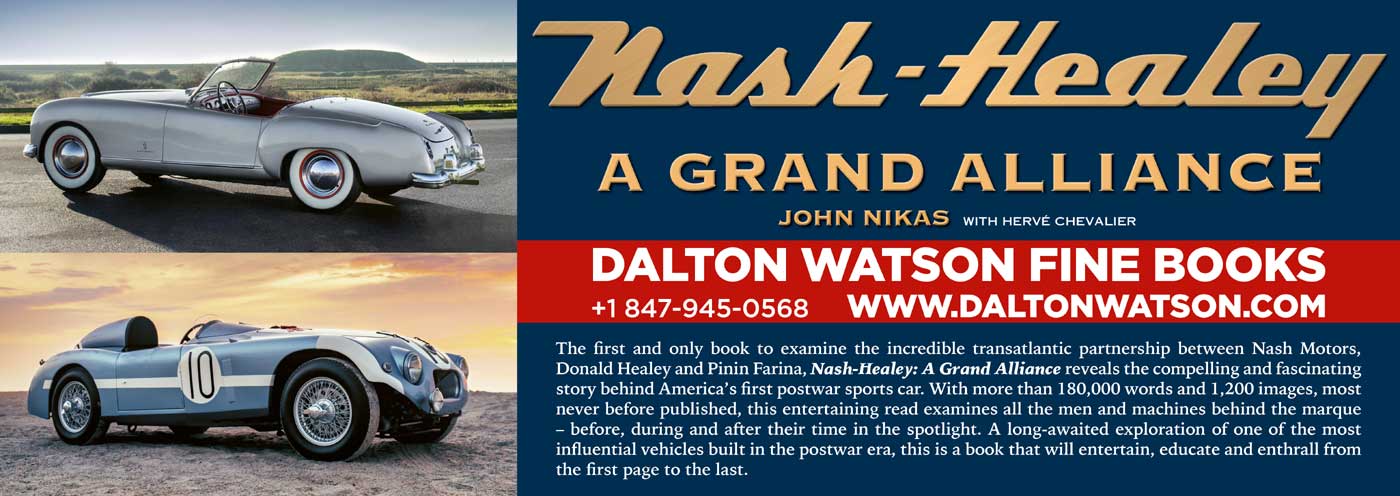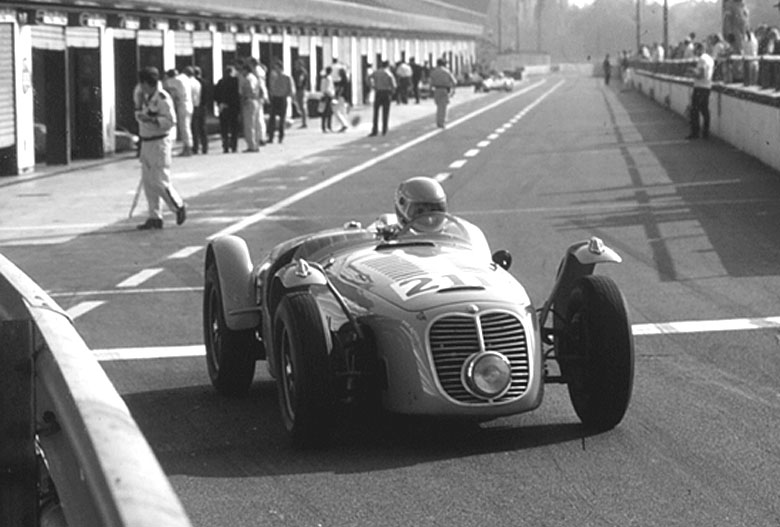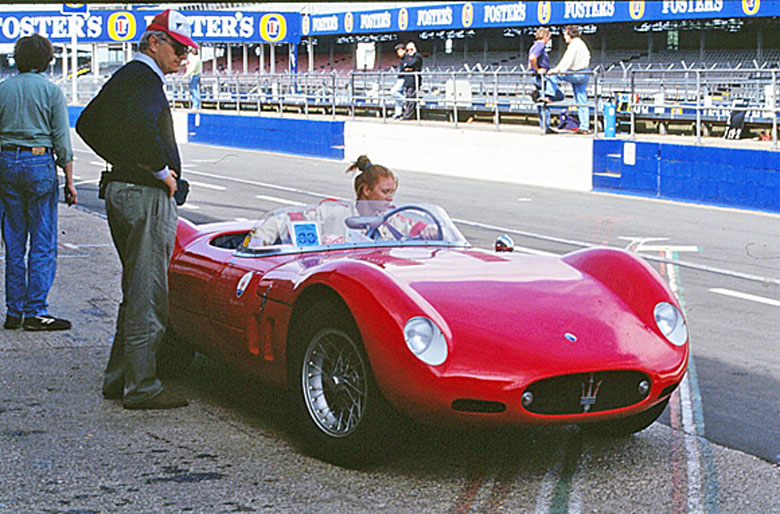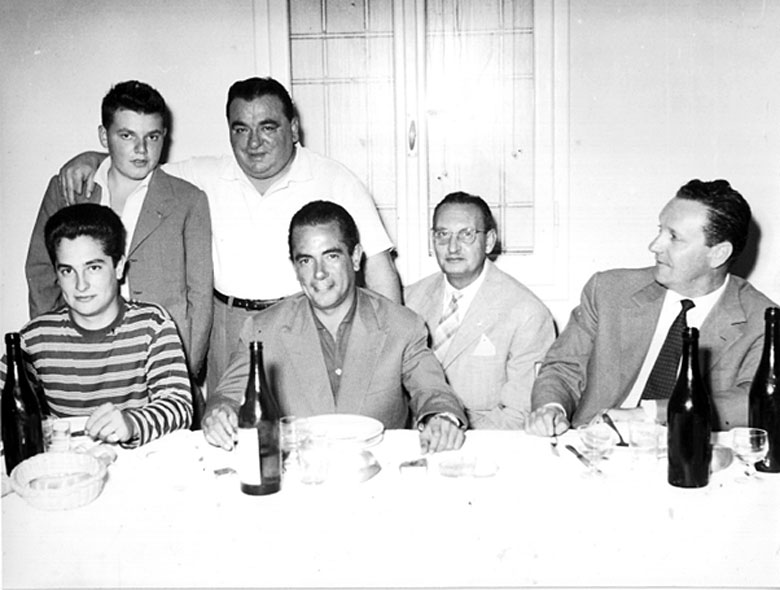
Photographed together at a dinner in Sant Agata Bolognese in the late 1950s. Standing at the back are young Fiorenzo Fantuzzi and his father Medardo. Front row Jean-Paul Behra and his father Jean Behra, Maserati chassis builder Caiani and Omer Orsi of Maserati. ( Photo: Adolfo Orsi, Historica Selecta)
Story by Graham Gauld
gv edit 3/10
One outstanding element in the rise of Modena as a centre for high performance road cars and racing cars in the 1950s was the proliferation of specialist artisans each of whom contributed something unique to the picture. As a result, there were numerous coachbuilders, many of whom were linked to companies like Stanguellini, Maserati, OSCA and Ferrari, so it was normal that at one time or another they would intermingle.
A typical example would be Carrozzeria Fantuzzi founded by Medardo Fantuzzi, who was born in 1906 in Bologna and trained as an engineer. In 1927 he and his brother Gino joined Maserati as apprentices shortly after the Maserati brothers started building their own racing cars.
Medardo was not initially involved in the crafting of the racing car bodies, but he was promoted to the post in the early 1930s, and from then was responsible for creating the style and bodywork for the company’s racing cars. A photograph was taken at the launch of the 1927 launch of the 16 cylinder V4 shows Medardo Fantuzzi with all the Maserati employees.
In the late 1930’s he and Gino left Maserati and formed their own Carrozzeria Fantuzzi in Modena taking on coachbuilding and repair work.
However after the end of WW II there was an immediate demand not only for repair work but for original designs, and in 1947 Fantuzzi designed and built bodies for the original A6GCS cycle-wing sports car nicknamed the “Monofaro” thanks to its single headlight. The GCS stood for ghisa, the cast-iron engine, C for corsa-racing-and S for sport.
Medardo was always the front man whilst his brother worked behind the scenes. He was easily recognised by his corpulent shape and centre-parted mop of black hair.
He had the style of an artist and the skill of a craftsman and soon work for Maserati began to dominate.
However, in 1958 Fantuzzi started to work with Enzo Ferrari and he reshaped the Dino Formula 1 car for 1959, smoothing it out and generally improving the aerodynamics. As can be seen from the photograph below taken in the Ferrari factory during the winter of 1958, the new Dino adopted a shape that was similar to the 250F Maserati which Fantuzzi had also crafted.
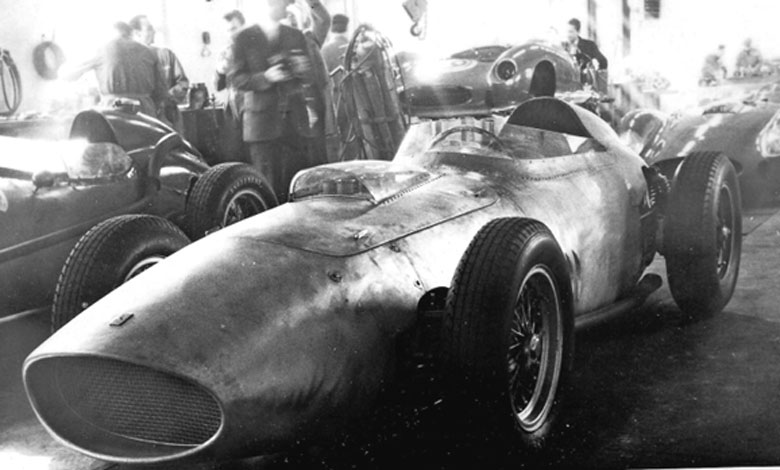
One of the 1959 Grand Prix Dino V6 Ferraris being built in the factory that received the Fantuzzi treatment greatly improving its aerodynamics. On the left is the earlier 1958 model. (Scuderia Ferrari)
Clearly Carrozzeria Fantuzzi was now pretty busy as an independent stylist and fabricator, and was now working both sides of the Via Emilia with Maserati and Ferrari and occasionally OSCA and Stanguellini with individual projects.
Indeed this period, right into the late 1970s, was the most productive and by now Medardo Fantuzzi’s son Fiorenzo had joined the company and was quickly learning the trade. Most of Fantuzzi’s work is overshadowed by his fellow Modenese fabricator Sergio Scaglietti but clearly there was enough work around to keep both of them busy. When Scaglietti was busy helping with Ferrari’s road car programme, it was Fantuzzi who designed and fabricated the bodies for the TR59 sports cars and the 250P. Then there was the Serenissima 308VJet long-tailed Berlinetta.
To my mind the most spectacular car Fantuzzi built was the De Tomaso Sport 5000 in 1965. The concept was put together by Alessandro de Tomaso and Carroll Shelby using the ubiquitous Ford Cobra V8 engine in the chassis of a Vallelunga, notably stiffened up. When it came to the body de Tomaso brought in American Peter Brock, who came up with a beautiful shape with a nicely-sculpted rear wing, and he chose Medardo Fantuzzi to fabricate the stunning bodywork. The idea was to produce a batch of fifty 5000 Sports, enough to have it homologated for international GT racing, but this plan did not go ahead.
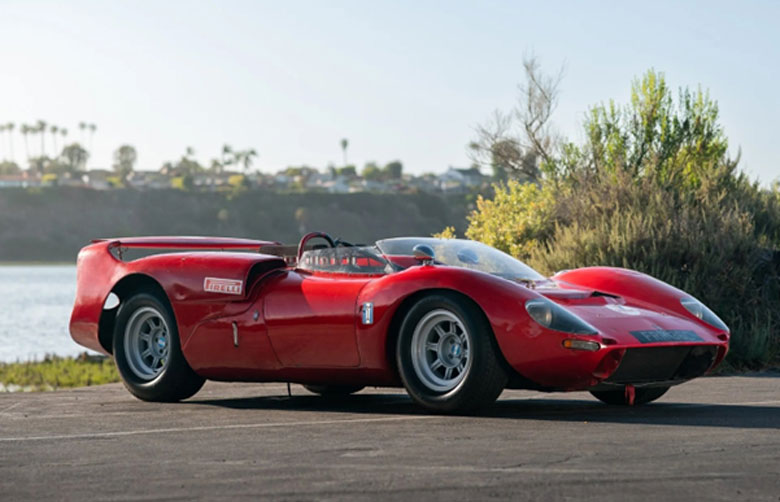
The spectacular de Tomaso Sport 5000 designed by Peter Brock but fashioned by Fantuzzi. (Photo courtesy Bonhams)
Amongst Medardo Fantuzzi’s many clients were two brothers from Bologna, Luciano and Gianfranco Pederzani . In the early sixties, they had embraced karting and their Tecno karts were being bought by many young drivers who were to go on to become famous in racing. They were selling well not only in Europe but exporting to the USA.
They celebrated their success by buying an early Ferrari 250GT Lusso (Chassis 4383GT) and decided that their Lusso would differ from all the others and so approached Medardo to customise their car. The result can be seen below which shows the complete restyling of the front hood with GTO portholes, elongated headlight covers and a more sculpted roof line.
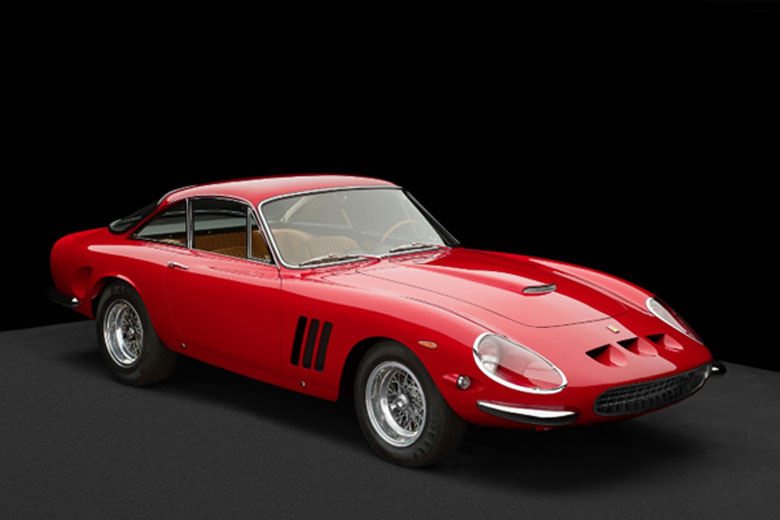
The very special one-off Ferrari 250GT Lusso designed for the Pederzani brothers. (Photo DK Engineering)
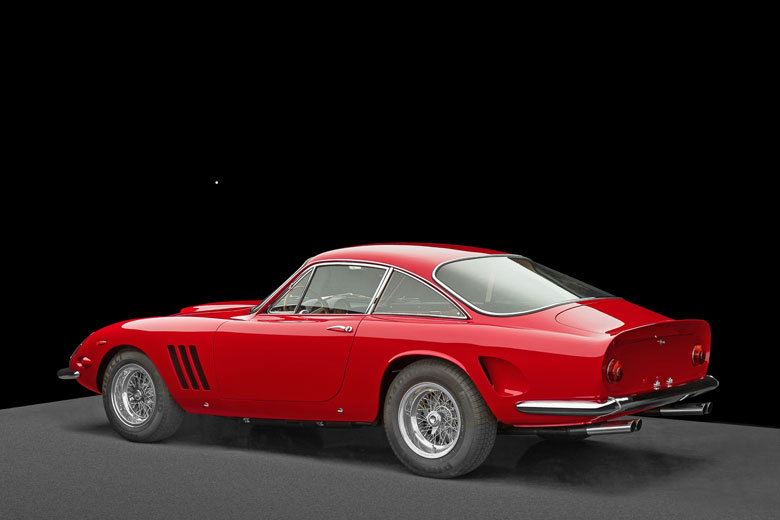
A rear shot of the Lusso which I think looks superb and far better than the original. Fantuzzi did the same with the one-off GTO now owned by Tony Wong.
Perhaps one of the oddest jobs Medardo took on centred around one of the four factory Ferrari 330LMBs that raced in the World Sports Car Championship. This one was chassis 4381 GT raced by Parkes and Bandini at Sebring and at Le Mans in 1963.
It returned to the factory and, at the end of the year, a film company in Rome approached Enzo Ferrari and asked if he would loan them the 330LMB.
Enzo was not on for that and insisted they not only had to buy the car with the strict understanding that it could not be identified as a Ferrari. The film company then asked Medardo Fantuzzi to fit a spyder body of his own design that was painted gold and was to be used in the film Histoires Extraordinaire and featured two famous directors, Louis Malle and Federico Fellini.
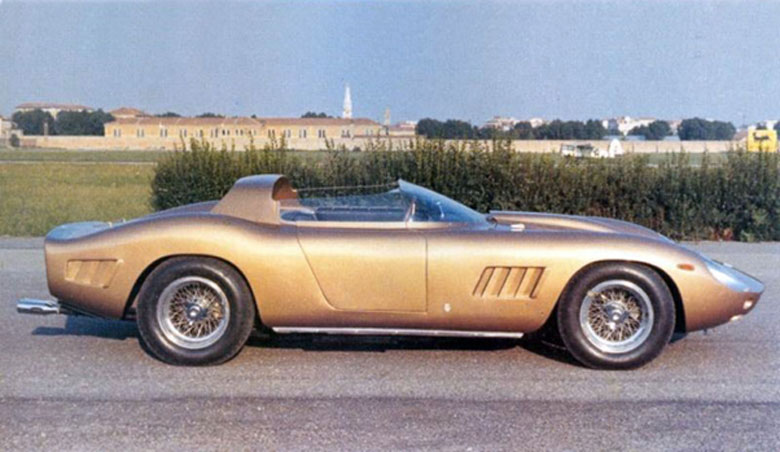
The Fantuzzi spider coachwork that was put on to the ex-factory 330LMB racer for the movie. (Photo source unknown)
After filming, the car hung about for many years until it was bought by collector Fabrizio Violatti for his museum in San Marino. Thankfully, Fantuzzi had retained the original 330 LMB bodywork and the car was restored to its former Ferrari glory and later raced successfully in the UK when owned by Harry Leventis.
But the story did not end there because the discarded Fantuzzi spider bodywork was bought by collector Giulo Dubbini who mounted it on to a stock 330GT road car chassis, and the car is still around somewhere in the USA.
Medardo Fantuzzi died in 1986 but the company he founded continued and today is owned by his son Fiorenzo. It specialises today in refurbishing sports and road cars of the past including a number of competition Ferraris and Maseratis.
Fantuzzi, then, deserves much greater recognition for his remarkable breadth of work during what most people agree was one of the golden periods of Italian automotive history.
Related Artices
